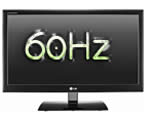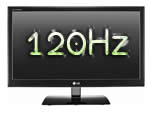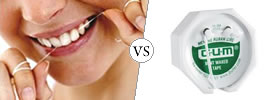Difference between 60Hz and 120Hz LCD TV
Key Difference: A TV with a 60Hz response rate can redraw an image 60 times per second, while a TV with a 120Hz response rate can redraw an image 120 times per second. A 60Hz may not always be able to keep up with fast paced images and may cause images to jerk or blur. The 120Hz can eliminate this problem.
With the fast paced advancement in technology, TV manufacturers have been constantly trying to improve a consumer’s TV viewing experience, which includes increase refresh rates on TVs. The refresh rate is the rate at which a TV redraws an image. A refresh rate gives the TV a faster and better response. A TV with a 60Hz response rate can redraw an image 60 times per second, while a TV with a 120Hz response rate can redraw an image 120 times per second.
 For fast paced movies or sports, a 60Hz cannot always keep up and may cause images to jerk or blur, known as judder. The changing image may be too large for the TV to show as a single image. The 120Hz can eliminate this problem as the changing images are not too big for it to display.
For fast paced movies or sports, a 60Hz cannot always keep up and may cause images to jerk or blur, known as judder. The changing image may be too large for the TV to show as a single image. The 120Hz can eliminate this problem as the changing images are not too big for it to display.
Another difference between the two is the way they show movies that are shot at 24 frames per second, as most movies are. For a 60Hz LCD TV, a 3:2 ratio is needed to convert and view the movie. The 3:2 ratio duplicates the frames by 3 and by 2 alternately, resulting in 12 frames being shown three times, while the other 12 frames only twice (12X3) and (12X2). This technique can cause an inconsistency with the image, and can also create a “judder” effect.

In a 120Hz LCD TV, a ratio is not needed, for a movie shot at 24fps; each frame can be shown 5 times (12X5), which results in 120 frames per second. This technique also works with other frame rates such as 30fps (30x4) or 60fps (60x2). However, the constantly fast refreshing may cause the background images to look boxed or unrealistic. This can easily be fixed as TVs with 120Hz includes an option in order to turn the 120Hz feature on or off, according to need.
|
|
60Hz |
120z |
|
Definition |
Refreshes images 60 times per second |
Refreshes images 120 times per second |
|
Ratio |
3:2 for movies |
Ratio is not required |
|
Advantages |
Cheaper; makes no difference to videos |
Removes the judder effect |
|
Limitations |
With fast paced sports or movies, judder may occur |
Background images can look less natural; more expensive |
Image Courtesy: plasmavslcd.com









Add new comment